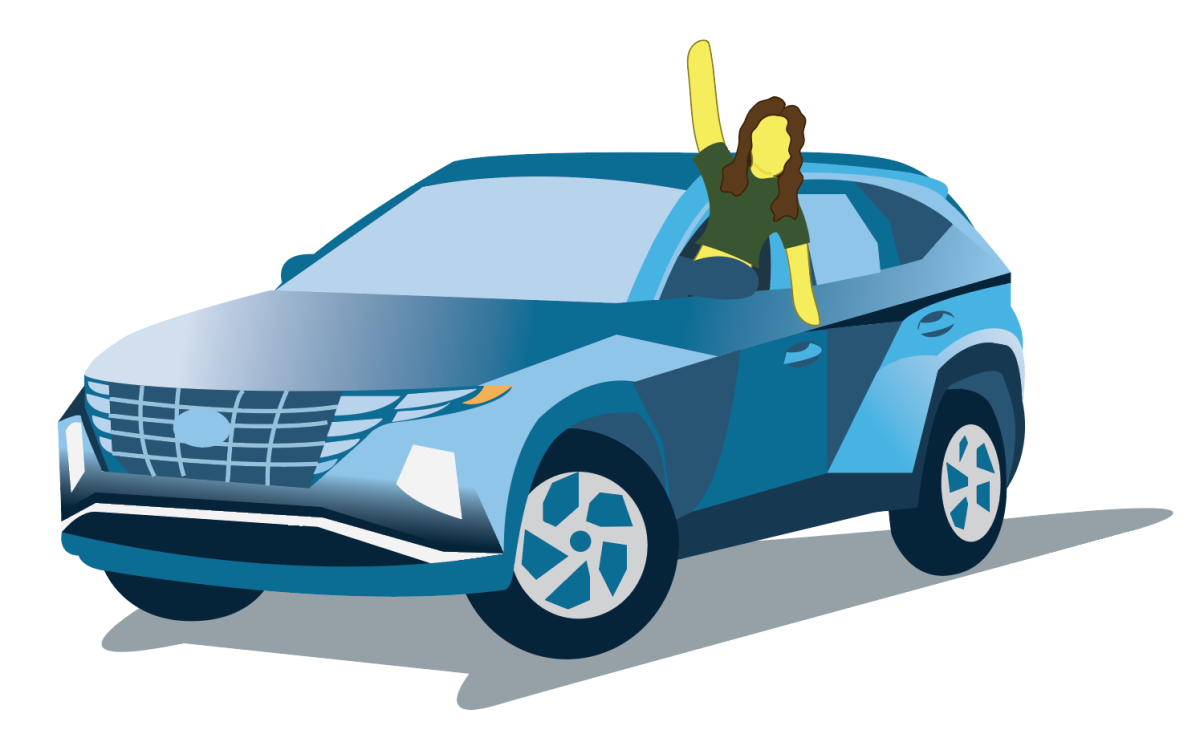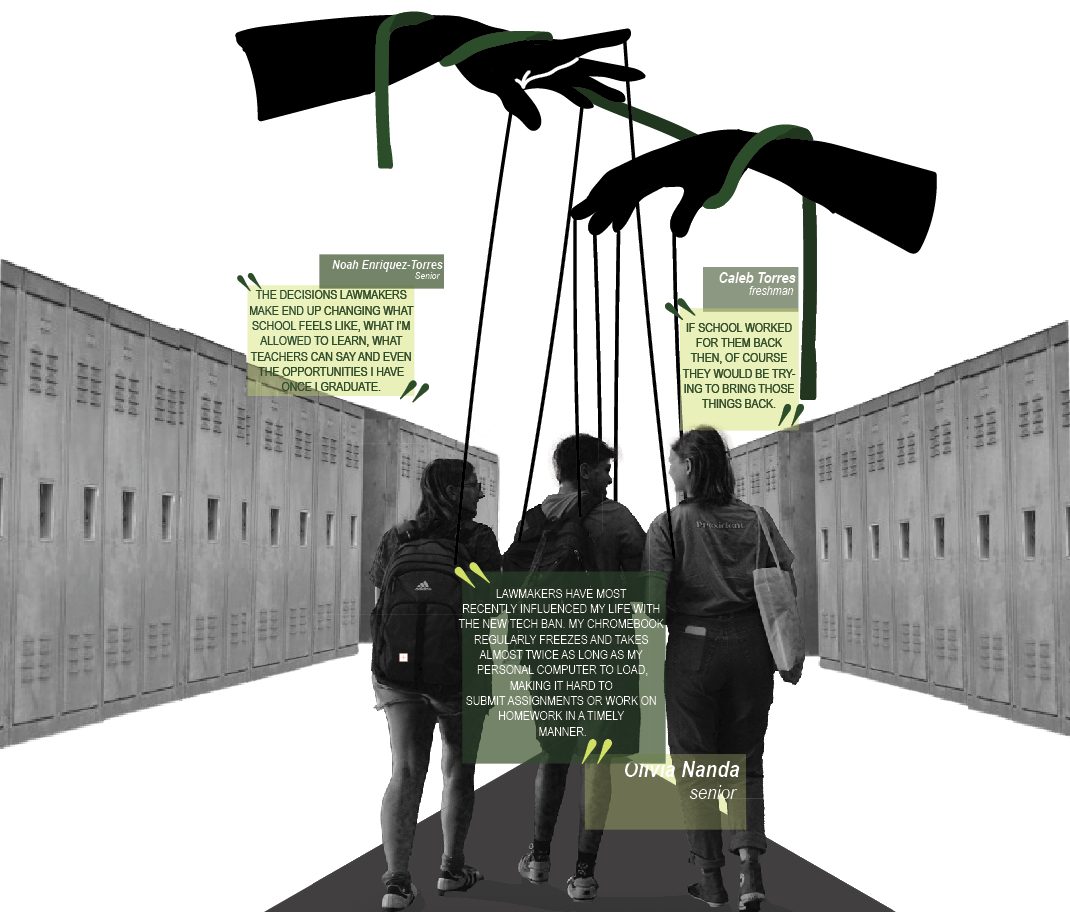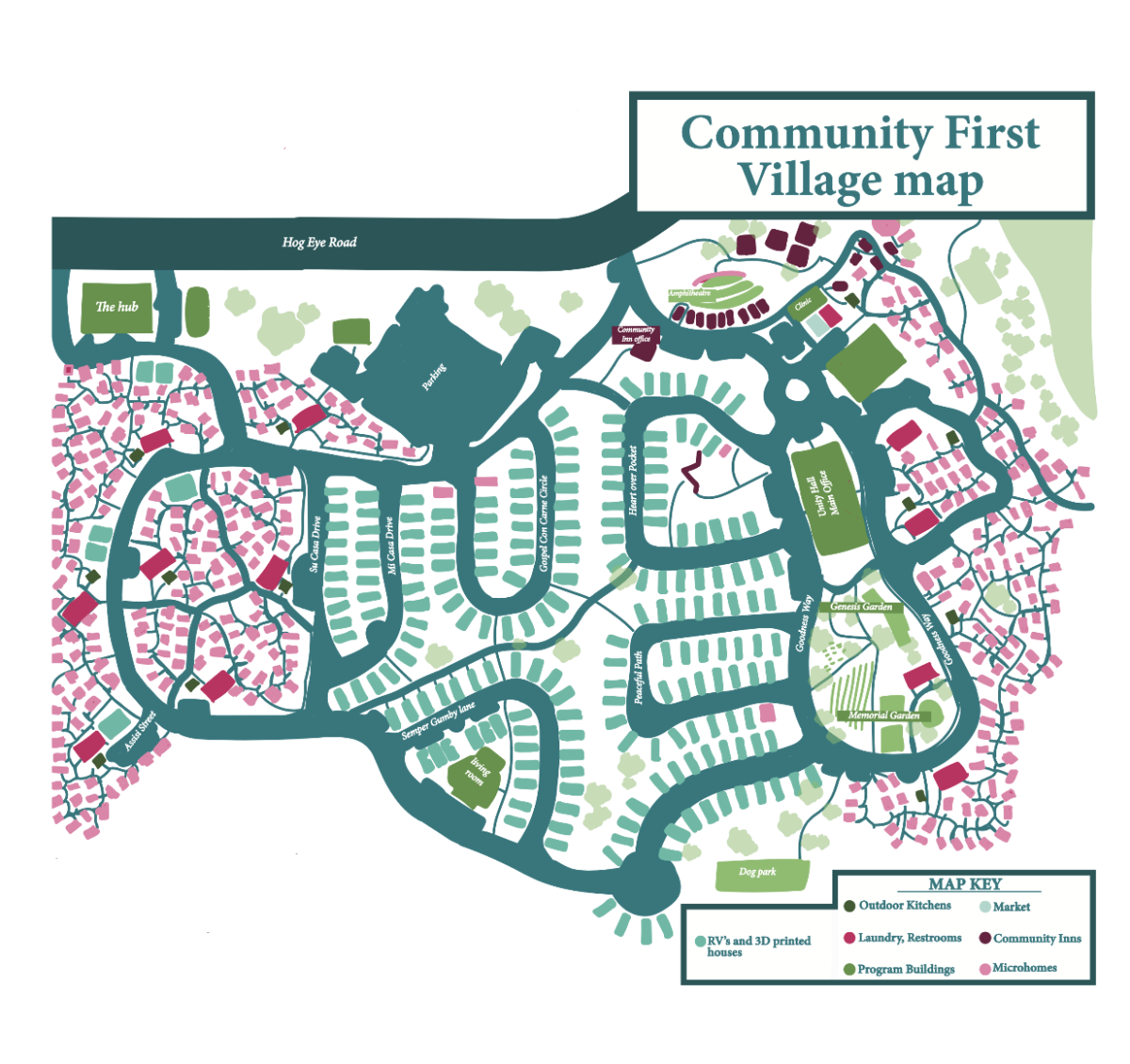He learned to be a cautious driver at age 17.
He was 17 when he was driving down the street in his 69 Chevy Bel Air. In a car surrounded by his friends he took his eyes off the road for a single moment and wrapped his car around a telephone pole. The impact cracked the pole in half, and crushed the front of the car leaving the steering column mere inches away from his chest.
No one in the car was seriously injured, but in that moment, 17-year old Andrew Padgett decided what kind of driver he wanted to be.
“I was your age when I turned into a grandpa driver,” Padgett said. “The very first time I wrapped my car around a telephone pole and that steering column at my chest was when I decided ‘back off Andy’, nothing is so important that you need to go so fast. Even if you’re late for work, it’s better to forfeit a little bit of money than to forfeit your life.”
Now as Campus Safety Monitor, Padgett references this as a teaching moment for students. He makes sure that students are driving safely on campus, obeying posted speed limits, and parking where they are supposed to.
“A car to me is a Jekyll and Hyde,” Padgett said. “I was that good student who was always in school. I never skipped school until I got a car. Once I got a car, my attendance still worked, but it wasn’t as good as it used to be, and that particular incident that I almost died in was just me being stupid.”

DRIVERS EDUCATION
The first ever gas powered vehicle was patented in 1886, Henry Ford’s assembly line first started running in 1913, and according to 911 Driving School, in 1920 drivers education was first introduced to high schools. From then into the mid to late 1900’s new inventions changed what in school drivers education courses looked like. According to MotorCities National Heritage Area, driver training textbooks such as “Man and the Motor Car” became available to high schoolers, and high schools built ranges where students could learn and practice how to drive.
“I did driving school old school, sat in the classroom, pressed the little stop thing with the lights, I did all the things,” AP Pre-Calculus teacher Kelly Flickinger said. “I felt like there were certain things that I didn’t get enough practice on in the class, because I only had this 45-minute time window to drive with a couple other people. So I really appreciate that when teaching our son how to drive, we got to kind of do stuff over and over again frequently.”
According to Professor Emeritus of Education at Stanford University, Larry Cuban, in-school drivers education began to fade out in 1983 due to changes in state curriculum priorities and the rise of private drivers education facilities. Following this, online and parent taught drivers education programs started gaining traction. A course made by National Driver Training (NDT) was approved by the state of Texas in 2000, and became the first known online driving course in the United States. Now, there are multiple online driving courses for students to choose from including Aceable, Texas Drivers School, and I Drive Safely.
“I was taught to drive by my parents,” senior Grace Hertel said. “My mom and dad had different styles, but they both got their points across to me, and I feel like I did pretty well on the driver’s test. A lot of the online modules for the driving course I took were on drunk driving, and it didn’t actually teach me any actual driving skills, so that was something my parents had to do.”
While some drivers courses give the option to pay for a trained professional for practical driving instruction, many students who choose online courses are parent taught. While parent-taught driving can make students feel more comfortable, and allow for a more flexible driving schedule, according to a study done by the Transportation Institute at Texas A&M in 2007, Parent taught drivers are almost three times more likely to be involved in a fatal crash.
“It was stressful to learn how to drive, because my parents are very stubborn and I’m the same exact way,” Hertel said. “Parents just expect you to know how to drive, when really you need to have the experience too. Not having someone that’s teaching you step-by-step can be really frustrating.”
FINANCING A CAR
Driving is often thought of as an opportunity for a teen to gain independence. According to Car Credit, owning a car as a teen has numerous benefits including improving teen responsibility and time management skills, expanding job and social opportunities, and helping teens develop financial management skills. According to a poll of 206 Bowie students, 10.8% of students either pay for their own car or split payments with their parents. Apart from the cost of their car, teen drivers can also run into multiple other expenses including insurance, gas, car maintenance and repairs, and parking permits.
“My parents’ deal was that I save up as much money as I could to use for a down payment, and then pay off my car with a job,” Hertel said. “Paying a monthly rate keeps me very real, and conscious about how much I’m spending. My parents wanted me to learn the responsibilities of having a car, and what the consequences are if I don’t pay for it, if I don’t keep maintenance up, because I had to pay for that as well. It makes me kind of proud that I have a responsibility like that.”
While paying for their own car can have benefits for teens, it also puts a financial burden on someone who is still in school. The average school day for a Bowie student is seven and a half hours long, not including any time students spend on sports or extracurricular activities outside of school hours. In addition to this, many students also have homework, or unfinished assignments which consume additional time from their schedules. This can leave students with little time for work outside of school without sacrificing sleep or time to do their assignments.
“Our oldest son predominantly drives one car, it’s not his, but he is the main user,” Flickinger said. “We pay the payments, we pay for gas, and we do that because he’s a student and we want him to focus on that. When I grew up, I only had one car in my family for six people, so we all shared the same car, so for my son to be able to have a car to use is definitely a privilege, and he knows that.”
CRUISING TO CAMPUS
According to the poll of Bowie students, 42.2% of students drive themselves to school in the morning, 28.6% of students get driven by a parent or adult, 18% of students ride the bus, 7.8% of students get a ride with a fellow student, and 3.4% of students walk or bike.
“I’ve parked in the garage since junior year, and it was fine last year,” Hertel said. “This year it’s different. There’s no spots on the ramp at all, which I really hate, because I get here early and still have to park on the second floor. I try to leave once the bell rings and get to my car as fast as I can. I get around home at around 5:20, mind you, I live five minutes away. That’s how bad the parking in the garage is, especially when I’m on the second floor. It’s very frustrating.”
There is one main exit open in the afternoon for students, parents, and buses to drive off campus. This can lead to congestion and traffic for those attempting to leave. In addition to this, current construction on Slaughter Lane can also slow traffic for students on their way home. According to assistant principal Octavio Angel, something that exacerbates this situation is the amount of students who park on and around campus. This year, all parking offered to students, including the parking garage, sold out.
“I wish we had more spots open for students, if we had another floor in the garage that’d be awesome,” Angel said. “I think that would alleviate a lot of concerns and issues kids have. We’re actually over the legal limit of parking spots that we were required to provide. We did our best to go above and beyond. It’s just tough. Dismissal is just tough for everyone, teachers, students, and staff.”
One daily occurrence that puts Bowie students through more driving stress than some may realize is lunch. As a senior privilege, Bowie allows seniors to go off campus for lunch. Many seniors seize this opportunity to leave, but run into a few common issues. Some seniors debate whether or not going off campus for lunch is worth giving up their parking spot, and if it is worth being late to their next class if they cannot return when the allotted 40 minute lunch time is over.
“I do go off campus for lunch since I’m a senior, but it’s hard because once you leave your spot is gone, so if you don’t have anything after school you’re kind of screwed,” Hertel said. “Also, the lunch period is not long enough to go out. It takes at least 10 minutes to get to Starbucks, ordering food takes 10 minutes, and getting back takes 10 minutes. That’s the whole lunch period, so we have to eat in our classes. It’s not safe at all. It’s a very stressful feeling whenever we go out, because we can’t dilly dally.”
According to data released by the National Highway Traffic Safety Administration (NHTSA) in 2021, almost one third of fatal crashes, and 13% of crashes resulting in injury are caused by speeding. While the Slaughter construction may cause more traffic congestion, according to Padgett, the traffic can have a positive impact on students, because it forces them to slow down and be more careful while driving.
“I keep the campus safe by going after the people who are exceeding the speed limits, who are going to run into the pedestrians that are crossing the street, who are going to run into other cars, and trying to get them to correct their behavior,” Padgett said. “In most cases students listen to us and understand that I’m not a mean guy. I’m not a mean person, I took a mean job, and unfortunately teenagers want to do whatever they want to do and they think they know it all.”
In an attempt to slow students down when they exit the parking garage seniors Megan Torres and Victoria Combs created a pitch for a speed-bump outside the garage. The pitch originally started as an assignment for their Engineering Design and Problem Solving class, but the pair decided their idea deserved to be heard by administration.
“Earlier that year someone got hit by a car that was speeding out of the parking garage, so we wanted to make it safer,” Torres said. “We proposed adding a speed-bump, a cross walk, and a door to the side of the garage that the grate is on to the left of the student entrance.”
When school started back up for the 2025-26 year, many organizations including the NHTSA sent out consumer alerts reminding students and parents to drive safely and be alert as students return to school. In a similar suit, Principal Mark Robinson reminds students to be aware of their surroundings and remember how dangerous driving can be.
“Being a new driver is exciting, but it’s also scary, because a car can do a lot of damage,” Robinson said. “Anytime we are overcome with sensory input it makes it hard for us to process and that can be catastrophic when a mistake is made including a vehicle. So, definitely on campus, I would say your first priority is to get from point A to point B safely. Control your speed, exercise caution, and be aware of your surroundings.”









